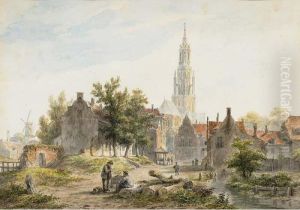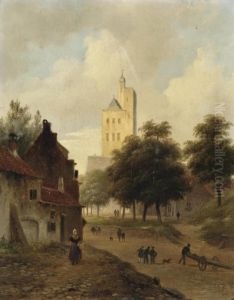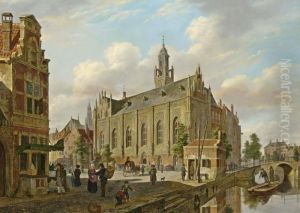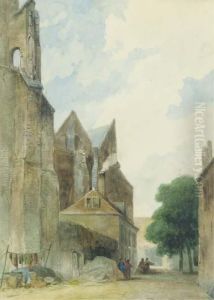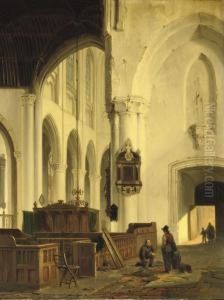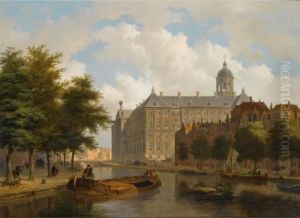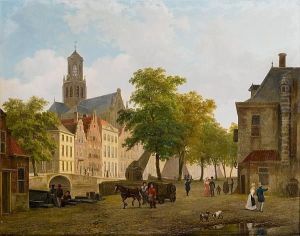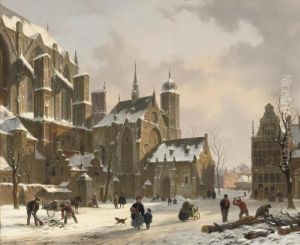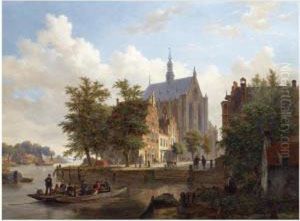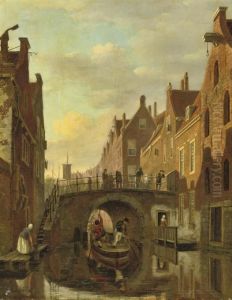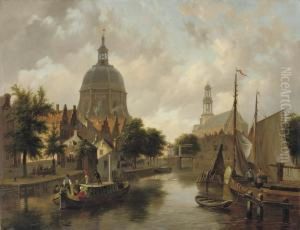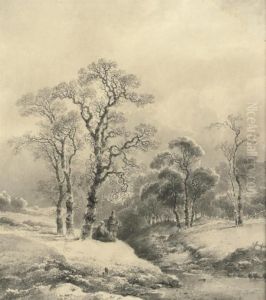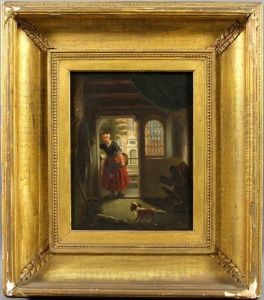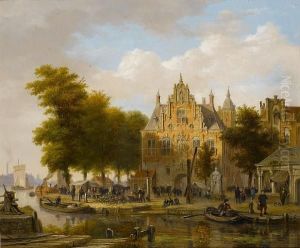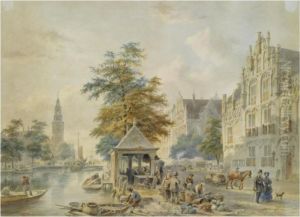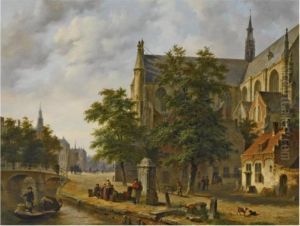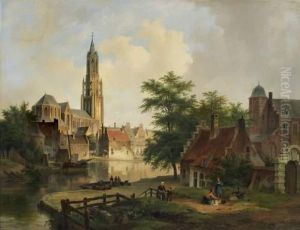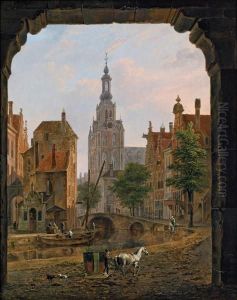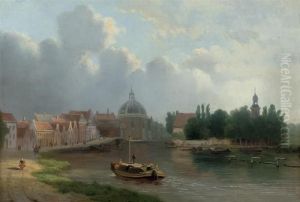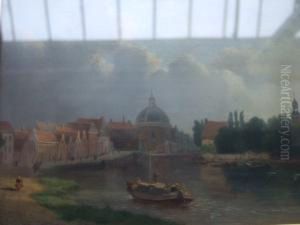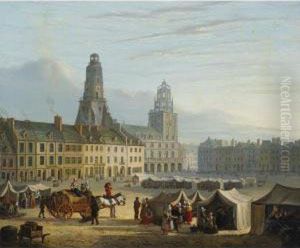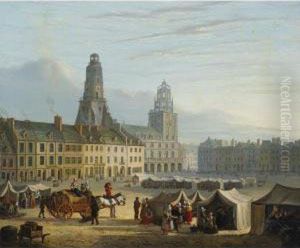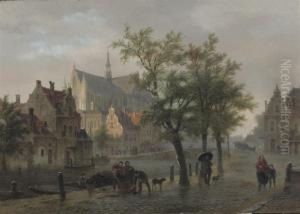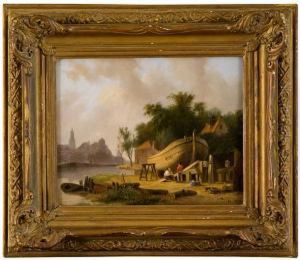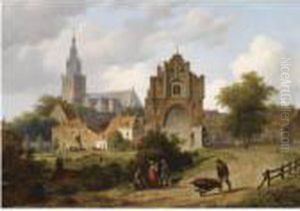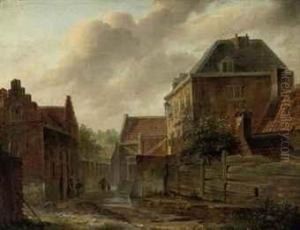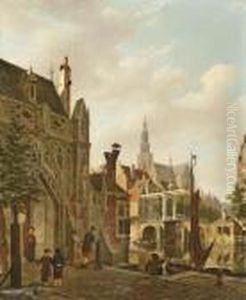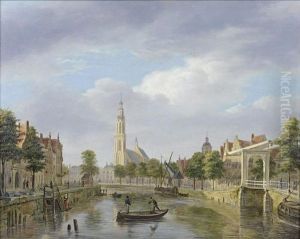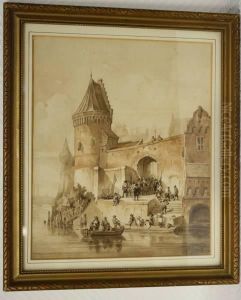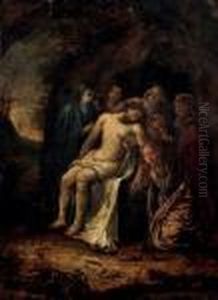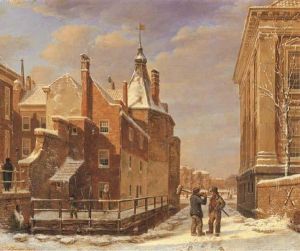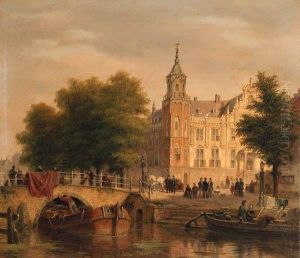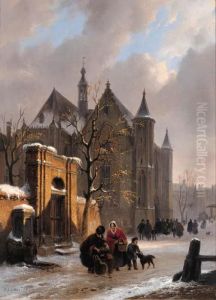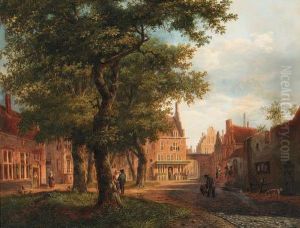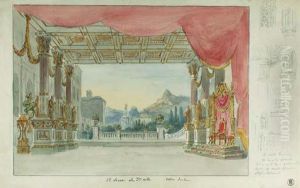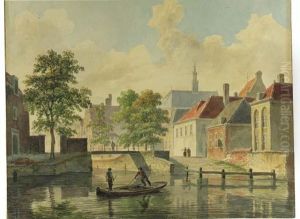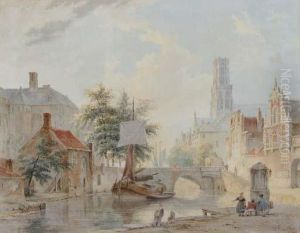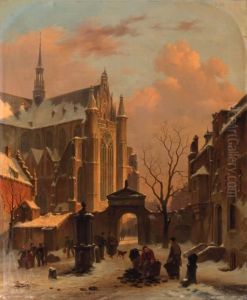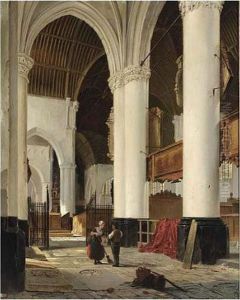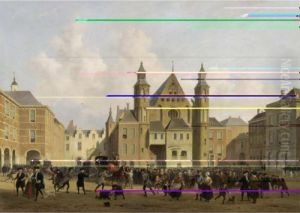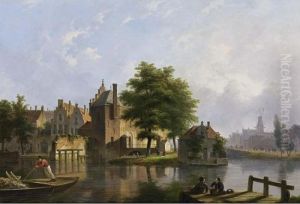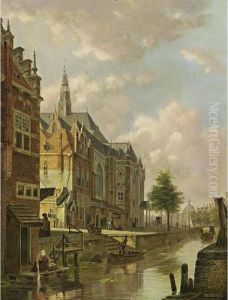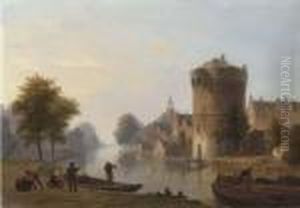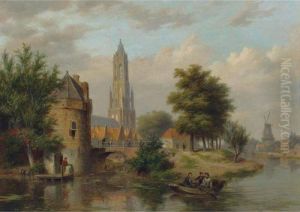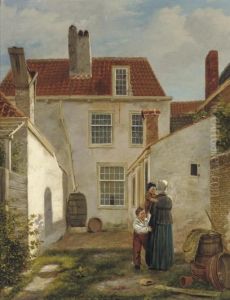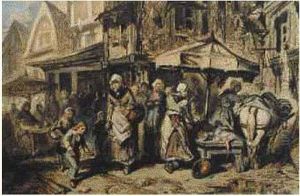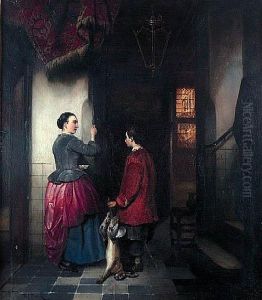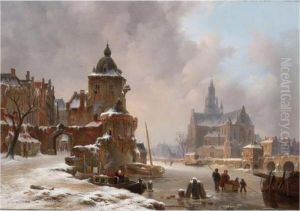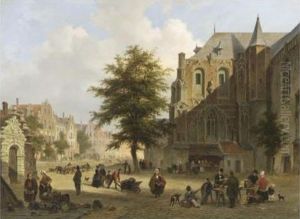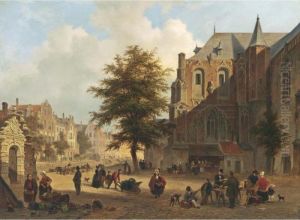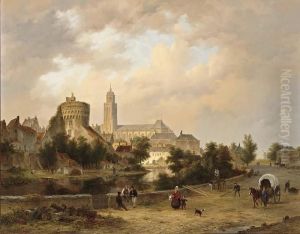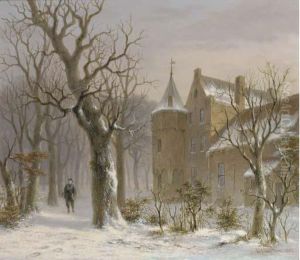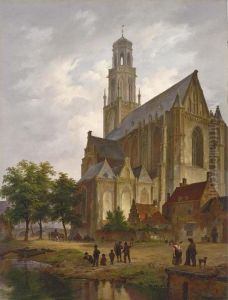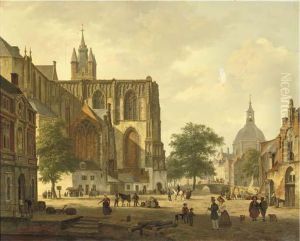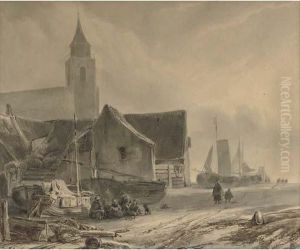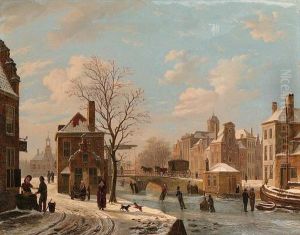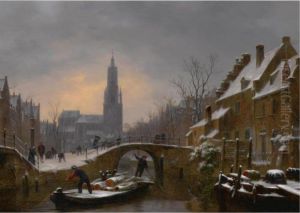Bartholomeus J. Van Hove Paintings
Bartholomeus Johannes van Hove was a Dutch painter and a prominent figure in the art scene of the Netherlands during the 19th century. Born on October 28, 1790, in The Hague, van Hove began his artistic journey under the tutelage of his father, Hubertus van Hove, who was himself a painter and a theatrical scene designer. This early exposure to the world of stage design had a lasting influence on van Hove's later works, which often incorporated architectural elements and dramatic perspectives.
Young van Hove's talents blossomed quickly, and he began to establish a reputation as a skilled painter of cityscapes and interiors. His works were characterized by their meticulous attention to detail and their portrayal of light, which he used effectively to create depth and atmosphere in his paintings.
In addition to his painting career, van Hove also followed in his father's footsteps by becoming a stage designer. He worked for various theaters in The Hague, bringing his keen eye for perspective and ambiance to the stage. His dual expertise in both painting and theater design allowed him to create immersive experiences for his audiences, whether on canvas or in the theater.
Throughout his lifetime, van Hove was an active member of the Royal Academy of Art in The Hague, where he also served as a teacher. His contributions to the Dutch art scene were significant, and he mentored several students who would go on to become accomplished artists in their own right.
Van Hove's work was widely appreciated during his lifetime, and he was commissioned to create works for important public and private collections. Despite facing personal tragedies, including the death of his son Hubertus van Hove, who was also a talented artist, van Hove continued to paint and influence the Dutch art world until his death on February 8, 1880.
Today, Bartholomeus Johannes van Hove is remembered as a master of Dutch cityscape painting, with his works held in high regard and featured in numerous collections and museums in the Netherlands and beyond. His legacy continues to influence Dutch art, and his contributions to stage design have also been recognized as significant in the history of Dutch theater.
